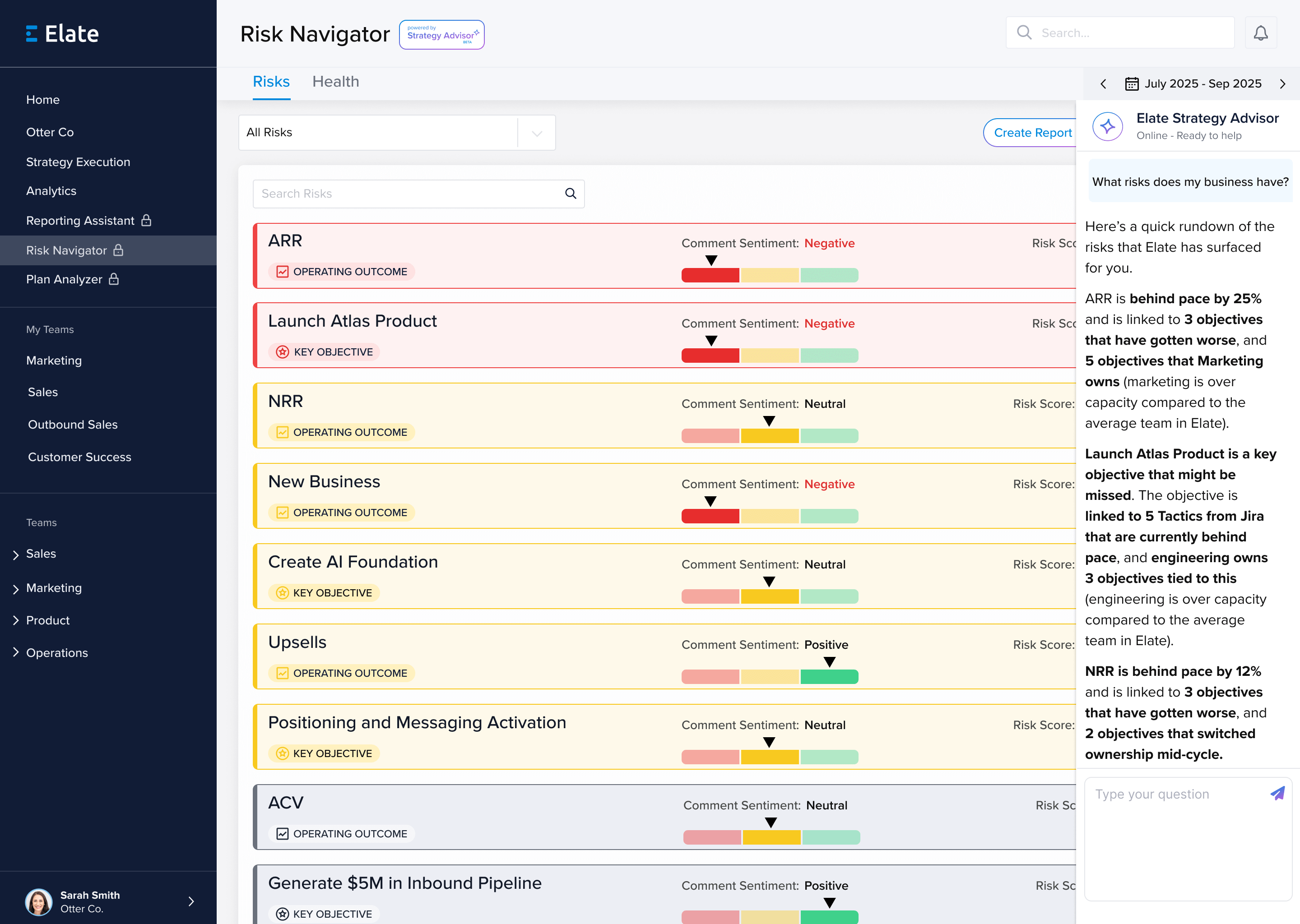Quick answer: Strategic planning is the discipline of making clear choices about where to play and how to win, translating those choices into priorities, and reviewing progress on a predictable operating cadence.
Operator note: Strategic planning works when it is treated as an operating discipline. The plan stays alive through consistent reviews, clear ownership, and decisions you can point to.
You know it's working when:
- The organization can articulate the top priorities and why they matter.
- Leaders revisit direction regularly and communicate what changed and what stops.
- Teams execute with fewer surprises because risks and dependencies are surfaced early.
In this guide:
- What strategic planning is (and what it is not)
- When should you run strategic planning?
- How do you build a strategic plan teams can execute?
- Common strategic planning mistakes
- Copy/paste template
- FAQs
What strategic planning is (and what it is not)
Strategic planning is not a once-a-year offsite and a polished slide deck. It is a set of decisions, written clearly enough that teams can execute them.
- It is: choices, tradeoffs, and an aligned direction that informs priorities.
- It is not: a list of everything each team wants to do.
- It becomes real when it changes what leaders say no to.
If you are starting from scratch, pair this with how to build a strategic plan.
When should you run strategic planning?
Most organizations benefit from a yearly refresh with lighter quarterly adjustments. You should also revisit strategy when the environment changes, the business model shifts, or priorities have drifted so far that teams no longer agree on what matters.
- New market pressure or a material competitive change
- A re-org, new GTM motion, or major product shift
- “Everything is priority” symptoms: overloaded teams and unclear tradeoffs
- Leadership meetings that feel like roll-call updates
If you need a simple cadence template, the Operating Rhythm Reference is a good baseline.
How do you build a strategic plan teams can execute?
- Start with the few things that must be true. Name the outcomes that matter over the next 12 to 18 months.
- Choose the bets. Group priorities into 3 to 5 Themes so leaders and teams can align quickly.
- Define success measures. Agree on a small set of KPIs and leading indicators.
- Translate to initiatives. Assign owners, milestones, and dependencies across teams.
- Decide how you will review. Put monthly and quarterly reviews on the calendar now.
Leaders often underestimate the “review” part. Strategy improves when you run it like a system, not an event. For tools that make execution easier, see tools for strategic planning.
Common strategic planning mistakes
- No explicit tradeoffs. New work gets added, but nothing stops.
- Vague measures. Activity is reported, but outcomes are unclear.
- Disconnected initiatives. Teams run projects that do not tie back to the plan.
- Cadence drift. Reviews get skipped, so problems surface late.
Checklist: your next planning cycle
- 3 to 5 Themes with a short rationale for each
- Objectives that describe the outcome, not the activity
- KPIs and proof points leaders will actually review
- Initiatives with owners, milestones, and dependencies
- A monthly review and a quarterly reset on the calendar
Once the plan exists, the next problem is execution. Use strategy execution, supported as a reference point for what good execution support looks like.
Copy/paste template: strategic planning charter
Example scenario: A plan becomes real when teams can see how their objectives roll up to the company’s themes and outcomes. When you review progress weekly or bi‑weekly and close out work each quarter, strategy stays dynamic instead of static.
A planning charter prevents scope creep and “planning theater.” It clarifies what decisions the cycle must produce.
Planning horizon: [annual, biannual, quarterly reset]
Decisions we must make: top choices, investments, and what stops
Inputs: performance, customer signals, market changes, capacity
Outputs: themes, outcomes, initiatives, scorecard, cadence
Owners: who drafts, who decides, who communicates
Cadence: leadership reviews and checkpoints
FAQs
What is the difference between strategic planning and annual planning?
Strategic planning sets the direction and the bets. Annual planning turns that direction into a funded and sequenced plan for the next year. You can do annual planning without strategy, but you will feel it quickly.
How many priorities should a strategic plan include?
Fewer than leadership wants. If teams cannot repeat the priorities without looking them up, the plan is too complex or too long.
How do you keep a strategic plan from becoming shelfware?
Run a real review cadence. Publish decisions. Track owners and milestones. If reviews are optional, the plan becomes optional.
Do we need software for strategic planning?
Not always. If spreadsheets and decks are causing version drift, unclear ownership, or slow executive reporting, it is usually time to evaluate a connected system. Start with strategic planning system.
Want to make this easier to run every week? See a short Elate walkthrough, then decide if a live demo is worth your time.











